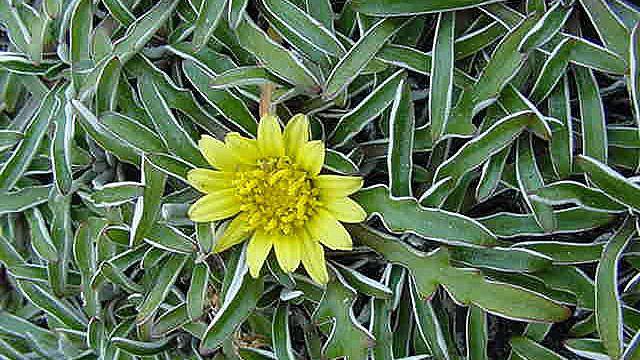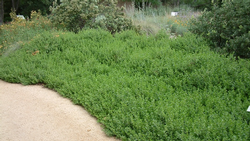Groundcover Plants: Serving Many Purposes

Groundcovers range from ground-hugging mats to 3 or 4-foot spreading plants. They can be woody or herbaceous, evergreen or deciduous. Some grow from a single stem; others have spreading underground rhizomes that allow the plant to "creep." Aesthetically, they can provide a restful expanse of green or splashes of vivid color.
Use our list of > LOW-GROWING GROUNDCOVERS

What do groundcovers do?
• Provide dense cover
• Snuff out weeds
• Help prevent soil erosion
• Protect soil from extreme temperatures
• Unify the landscape
• Create low hedges
• Soften hardscapes like driveways and sidewalks
• Define a space or pathway
• Provide a transition between lawn and taller plants in beds
• Add colorful foliage, flowers, fruit, and other attractive plant attributes
• Cover a large expanse or slope, often with low or no supplemental water once established.
• Replace a lawn
• Provide quick cover
How to space groundcovers
Deciding how far apart to space groundcover plants depends on the ultimate size, rate of growth, and how fast you want to cover an area.
• Faster-growing groundcovers are often spaced further apart than slower-growing species, but if you need to cover an area quickly, then closer spacing may be helpful.
• Be sure you leave ample room for the plants to spread out. If you plant too closely, you could be creating a maintenance headache.
